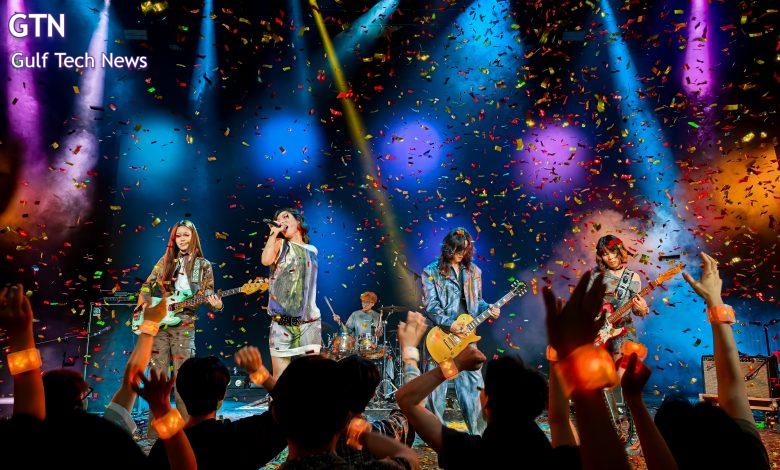Smartphones Are Getting Too Good and Challenging Concert Photography Rules

Most concert and sports venues have historically imposed a blanket ban on what they call “professional cameras.” By that appellation, they generally mean any DSLR or mirrorless system with interchangeable lenses. Why? Because media rights are big money, and event organisers aren’t too thrilled about fans snapping commercial-quality images without forking over for a credential.
It might not be long before they have to rethink such restrictions. Smartphone cameras have come a long, long way, and with each new release, they’re creeping closer to the territory once reserved for high-end glass.
Not that long ago, it was almost impossible to get a good picture of the performers at a concert with just a smartphone, especially if it was at night. Unless you are willing to pay big money for the front row seats, you will need to have a high-end flagship smartphone with a periscope zoom. Even with those, you’re still fighting against physics.
Telephoto cameras on phones just don’t perform as well in low light compared to the main lens. And with artists constantly moving, fog machines pumping, and strobe lights flashing, they struggle to keep up. Because the smartphone zoom cameras are much inferior as compared to professional gear, the camera ban at event venues has continued to serve as intended.
The sensor size problem
Many of the challenges of photography come down to physics. And for smartphones, the size is the biggest limiting factor. To let the most light in, especially when there is little to go around, large sensors and large aperture lenses. Smartphones have to fight against physics and rely on the processing power to work around the inherent size limitation.
It gets even more complex since smartphones have to accommodate multiple cameras and focal lengths within their body, which is a few millimetres thick. Sensor size plays a significant role in the final image quality. A large sensor has more area to collect light and has a greater dynamic range. Because it is not possible to fit multiple large sensors in a smartphone, designers usually allot the largest sensor for the main wide-angle camera and all smaller sensors for the rest.
Dual telephoto systems, featuring zoom cameras of different focal lengths, have become a standard feature in high-end flagship smartphones. A medium zoom camera with about 3x zoom and a longer one with about 10x zoom is the usual convention.
From a photography standpoint, this makes sense because the medium zoom comes in handy for everyday things like portraits and food photography, while long zooms have more niche use cases. It is typical for these cameras to have much smaller sensors than the main camera, and the image quality suffers as a result.
No more room for zoom?
To really improve zoom cameras, they should get bigger sensors. There is also a practical limit to how big a smartphone can be. Camera modules on smartphones have been consistently growing larger over the years.
It looks like we are at the very edge of the limit without going into the ridiculous territory. That means there is no way zoom cameras can get any better, right? Wrong. Huawei’s latest flagship smartphone, HUAWEI Pura 80 Ultra, has come up with an ingenious solution where you can have the cake and eat it too.
Instead of having separate sensors for the two telephoto lens systems, the phone uses a switching mechanism by which the medium and long zooms can share a single large sensor. The HUAWEI Pura 80 Ultra introduces the industry’s first Switchable Dual Telephoto Camera system. It combines a 3.7x medium telephoto and a 9.4x super telephoto lens into one unified system that shares a 1/1.28-inch Ultra Large Sensor, typically used for main cameras.
This system allows both focal lengths to take advantage of the same high-quality sensor, ensuring significantly better light capture, improved dynamic range, and reduced noise, especially in the kind of harsh, unpredictable lighting conditions you’d find at concerts. It’s the kind of innovation that could finally push telephoto smartphone cameras into the same league as their primary counterparts.
In practical terms, you get a 3.7x zoom that’s crisp enough for portraits and street photography, and a 9.4x zoom that can finally hold its own in dim concert halls and stadiums.
Rethinking the rules
It’s getting harder to justify the whole “no pro cameras allowed” rule. When a phone that fits in your pocket can produce zoom shots sharp enough for publication, the old distinction between “consumer” and “professional” hardware starts to blur.
Organisers might still have reasons to regulate equipment, like avoiding obstruction, but the notion that small size equals low quality is rapidly dying. In the coming years, we may see more venues rethink blanket bans or refine their policies.
The HUAWEI Pura 80 Series is available now in the Kingdom of Saudi Arabia starting from 3999 SAR through Huawei’s online store and several authorized retailers.


